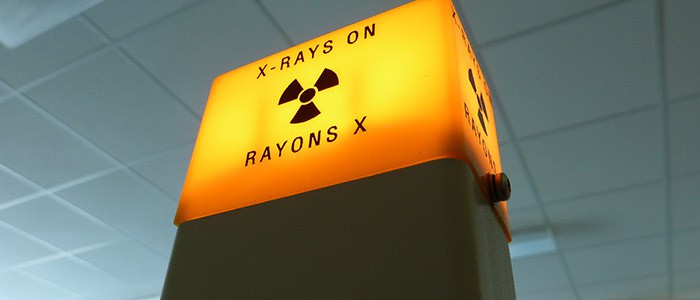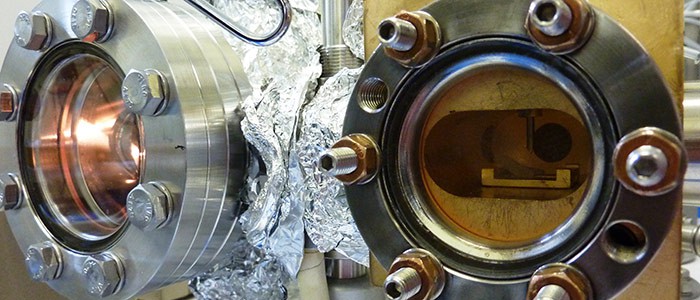Our wet chemical laboratory works with a broad spectrum of various methods making the analysis of glass’ important characteristics possible. That is why we are among others capable of identifying the exact composition of glass or parameters appropriate to pharmaceutic standards. In the following structure for each subitem some methods and possibilities are presented. However, they do not depict our full range in this field. Please contact us via the contact formula or call us if you want to find out, weather we can offer a helpful product.
Determination of concentrations

ICP-OES (f. ex. Alkalies, alkaline earth metals, heavy metals, assay of traces,…)
DIN 51 086-2 “Testing of oxidic raw and basic materials for ceramic, glass and glazes – determination of Ag, As, B, Ba, Be, Bi, Ca, Cd, Ce, Co, Cr, Cu, Er, Eu, Fe, La, Mg, Mn, Mo, Nd, Ni, P, Pb, Pr, S, Sb, Se, Sn, Sr, Ti, V, W,Y, Yb, Zn, Zr with inductively coupled plasma (ICP-OES)”
X-ray fluorescence analysis – XRF
DIN 51001-1 “Testing of oxidic raw materials and basic materials – general bases of work for X-Ray fluorescence method (XRF)”
DIN 51418 “X-ray emission – and X-ray fluorescence analysis (XRF)”
X-Ray phases analysis –RPA/XRD
DIN EN 13925 “Non-destructive testing – X-ray diffraction from polycrystalline and amorphous material 1 and 2”
LIBS – Laser-induced breakdown spectroscopy
Determination of fluoride content after pyrohydrolysis
DIN 51 084 “Testing of oxidic raw and basic materials for ceramic, glass and glazes – determination of fluoride content”
Flame photometric determination of Na, K and Li
DIN 52 340-8 “Chemical analysis of colourless soda-lime-glass – determination of Na2O and K2O by flame atomic emission spectroscopy (AES)”
Determination of boron (titrimetric/flame photometric)
DIN EN ISO 21 078-1 “Determination of boron(III) oxide in refractory products – Part 1: Determination of total boron (III) oxide in oxidic materials for ceramics, glass and glazes”
Redox state (wet chemical on the basis of the relation Fe2O3/FeO)
DIN 52340-6 “Chemical analysis of colourless soda-lime glass – Part 6: Determination of total iron oxides as Fe2O3”
COD-Determination (concentration of oxidable contents, glass and raw materials)
DIN 38 409-41 “Summary parameters of substances and effects (group H), determination of chemical oxygen demand)
Lead and cadmium discharge of commodities of glass
Concentration of silicic acid (gravimetric)
DIN 52 340-2 “Chemical analysis of colourless soda-lime-glass with SiO2, CaO, MgO and Na2O as main constituents; determination of SiO2”
Resistances
Hydrolytic resistance at 98 °C (glass grains method)
DIN ISO 719 “Hydrolytic resistance of glass grains at 98 °C; Method of test and classification”
Hydrolytic resistance at 121 °C (glass grains method)
DIN ISO 720 “Hydrolytic resistance of glass grains at 121 °C, Method of test and classification”
Hydrolytic resistance of inner surfaces incl. concentration of arsenic
DIN 52 339-1“Testing of glass; autoclave method for testing the hydrolytic resistance of the interior surfaces of glass containers and classification; determination by titration”
DIN 52 339-2 “Testing of glass; autoclave method for testing the hydrolytic resistance of the interior surfaces of glass containers and classification; determination by flame spectrophotometry”
Chemical resistance (acid class and base class)
DIN ISO 1776 “Glass; Resistance to attack by hydrochloric acid at 100°C; Flame emission or flame atomic absorption spectrometric method”
DIN ISO 695 “Resistance to attack by a boiling aqueous solution of mixed alkali; Method of test and classification”
Determination of glass and caverns’ contents
We are one of the few independent laboratories having the ability to perform mass spectrometric analysis of bubbles and investigation of caverns’ contents. In this context we can state the qualitative and quantitative composition of gas and deliver important hints concerning the bubbles’ origin.

